| Date | Text | |
|---|---|---|
15 Nov 1599

Werner Rolfinck |
birth Werner Rolfinck Werner Rolfinck, German scientist (died 1673) |
|
15 Nov 1630
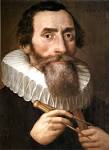
Johannes Kepler |
death Johannes Kepler Johannes Kepler, astronomer (born 1571) |
|
15 Nov 1688
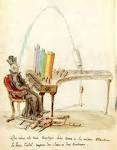
Louis Bertrand Castel |
birth Louis Bertrand Castel Louis Bertrand Castel, French Jesuit mathematician and physicist (died 1757) |
|
15 Nov 1738
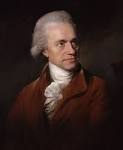
William Herschel |
birth William Herschel William Herschel, German-born astronomer (died 1822) |
|
15 Nov 1766
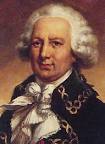
Louis Antoine de Bougainville |
Louis Antoine de Bougainville (exploration) Louis Antoine de Bougainville leaves Nantes for a three-year circumnavigation of the world with the ships La Boudeuse and Étoile; the botanist Philibert Commerçon is on board. |
|
15 Nov 1839
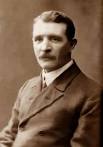
William Murdoch |
death William Murdoch William Murdoch (born 1754), Scottish-born inventor and technician. |
|
15 Nov 1874

August Krogh |
birth August Krogh Born 15 Nov 1874; died 13 Sep 1949 at age 74. Schack August Steenberg Krogh was a Danish physiologist and zoologist who received the Nobel Prize for Physiology or Medicine in 1920 for his discovery of the motor-regulating mechanism of capillaries (small blood vessels). Working with frogs, which he injected with Indian ink shortly before killing, he showed that in sample areas of resting muscle the number of visible (stained) capillaries was about 5 per square millimeter; in stimulated muscle, however, the number was increased to 190 per square millimeter. From this he concluded that there must be a physiological mechanism to control the action of the capillaries in response to the needs of the body (not just flow due to heart beating). Krogh's research linked exercise physiology with nutrition and metabolism. |
|
15 Nov 1885

Sir Frederick Handley Page |
birth Sir Frederick Handley Page Born 15 Nov 1885; died 21 Apr 1962 at age 76. British aircraft designer who built the Handley Page 0/400, the world's first twin-engine bomber for the Royal Flying Corps, one of the largest planes used in WW I, which carried out their first large-scale bombing raids on enemy military installations and submarine bases in Nov 1916. By 1918, he had produced a four-engine bomber that could attack the industrial zones of the Saar and the Ruhr in Germany. In 1930, he produced the first 40-seat civilian airliner, the Hercules. For WW II, Page returned to producing military aircraft, the most important being the Halifax bomber. The government purchased 7,000 of these planes. He was knighted for his contribution to the war effort. After the war Page designed the four-engine jet bomber, the Victor. |
|
15 Nov 1888

H. U. Sverdrup |
birth H. U. Sverdrup Born 15 Nov 1888; died 21 Aug 1957 at age 68. Harald Ulrik Sverdrup was a Norwegian meteorologist and oceanographer known for his studies of the physics, chemistry, and biology of the oceans. He explained the equatorial countercurrents and helped develop the method of predicting surf and breakers. As scientific director of Roald Amundsen's polar expedition on Maud (1918-1925), Sverdrup worked extensively on meteorology, magnetics, atmospheric electricity, physical oceanography, and tidal dynamics on the Siberian shelf, and even on the anthropology of Chukchi natives. In 1953, Sverdrup quantified the concept of "critical depth", explaining the onset of the spring phytoplankton bloom in newly stratified water columns. |
|
15 Nov 1888

Harald Ulrik Sverdrup |
birth Harald Ulrik Sverdrup Harald Ulrik Sverdrup (died 1957), meteorologist and oceanographer. |
|
15 Nov 1959

C. T. R. Wilson |
death C. T. R. Wilson C. T. R. Wilson (born 1869), Scottish physicist (Nobel Prize in Physics 1927) |
|
15 Nov 1961

Johanna Westerdijk |
death Johanna Westerdijk Johanna Westerdijk (born 1883), Dutch plant pathologist |
|
15 Nov 1971

Intel |
Intel (computer science) Intel release the world's first microprocessor, the 4004. |
|
15 Nov 1978
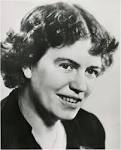
Margaret Mead |
death Margaret Mead Margaret Mead (b. 1901), American cultural anthropologist. |
|
15 Nov 1988
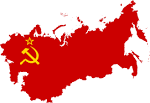
Soviet Union |
Soviet Union (astronomy and space ) In the Soviet Union, the uncrewed Shuttle Buran is launched by an Energia rocket on her maiden orbital spaceflight (this was the first and last space flight for the shuttle). |
|
15 Nov 2004
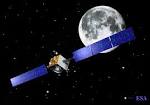
SMART-1 |
SMART-1 (space exploration) The SMART-1 space probe reaches orbit around the Moon. It is the first European space mission to do so. |